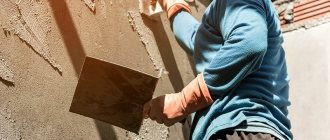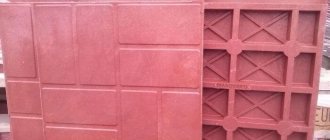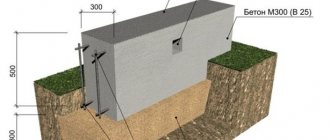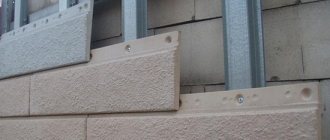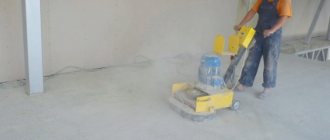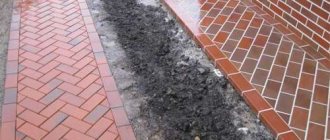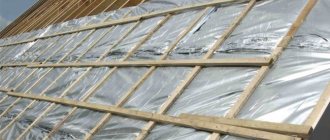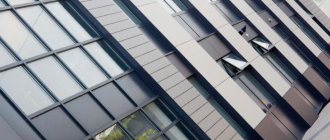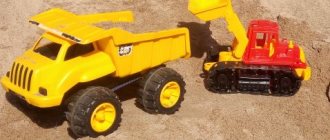Expanded perlite sand is currently widely used in construction. Among professionals, this material is also commonly called expanded perlite, perlite and perlite sand.
It is a granular aggregate with increased strength and reduced moisture absorption, which is used to create lightweight concrete, plaster mortars, and also as fillers for linoleum, ceramic tiles, paints, dry building mixtures, and so on.
Perlite production
The production of perlite begins with the determination of the starting materials: they are different types of natural silicate rocks of volcanic origin.
The main feature of this material is its unique ability, when quickly heated (temperature range - 900-1100°C), to increase in volume by about 20 times and turn into porous sterile granules with a size of 1-5 mm. In this case, perlite sand becomes white and has a bulk density of 75-150 kg/m3. As a result, the production of perlite makes it possible to obtain a very light and environmentally friendly material with excellent thermal conductivity qualities, which contribute to the fact that this material and the final products made from it are used in a wide variety of areas of human activity.
In such areas as, for example, industry, construction, metallurgy, agriculture and other areas. As a rule, the main determining point of using expanded perlite is its good sealing ability at temperatures from - 200 to + 900 ° C.
Chemical composition and structures
Perlite is a special form of porous natural glass containing at least 1.5% water. Its multicomponent composition contains a whole complex of oxygen compounds :
- 65 to 75% silicon dioxide;
- from 10 to 16% aluminum oxide;
- up to 5% potassium oxide;
- up to 4% sodium oxide;
- up to 3% ferric oxide;
- up to 2% calcium oxide;
- up to 1% magnesium oxide;
- from 2 to 6% water.
There are minerals with impurities of obsidian and feldspar, homogeneous in composition and glassy; iron compounds give them magnetic properties. Pearlite structures have porosity from 8 to 40%, vary in shape, size and degree of dispersion of inclusions of iron oxides and carbides, and are granular or lamellar in type. When heated to 780 °C, cementite takes the form of grains, and pearlite with a granular structure is obtained. It is also formed during supercooling of heterogeneous raw materials, and undissolved particles serve as crystallization centers.
Heating to temperatures of about 900 °C creates conditions for the formation of a homogeneous lamellar structure, where cementite has the form of plates. It is superior to granular in strength and hardness, but inferior in elasticity. It is thanks to the addition of lamellar perlite that building materials acquire fire resistance and heat-insulating properties, and structures become strong and lightweight with a smaller volume.
Benefits of perlite sand
The undoubted advantages of perlite sand include the following qualities: 1. High sound insulation. Expanded perlite has such qualities as fluidity and porosity, which allows this sand to be used as a practical soundproofing material. Due to the fact that perlite granules have an uneven shape, they can fit closely together. This allows you to significantly reduce the penetration of sound waves through ceilings and walls. 2. Economic benefit. Thermal insulation created on the basis of perlite sand guarantees excellent heat and fire-resistant properties of walls at low monetary and labor costs. Perlite is lightweight and can quickly fill the necessary voids in any masonry. At the same time, builders do not need to use special equipment or practical skills.
3. Long service life. Expanded perlite insulation does not lose its properties over time; it does not settle in thermal protection shells, in the voids of wall masonry or in the wall blocks themselves. 4. Material fluidity. This characteristic allows perlite sand to completely fill all empty spaces and cavities of wall masonry. The result is a solution to the problem of complete insulation, which is usually achieved by using rigid insulation. 5. Inorganic origin. Since perlite sand by its nature is an inorganic material - volcanic glass, it does not rot and does not harbor parasites, rodents and ants. 6. Environmental safety. Due to the fact that perlite sand is not fibrous, it is considered an absolutely safe material for humans that does not cause allergic reactions, does not irritate the skin and does not harm the microclimate of the room.
7. Highly non-flammable.
As a result of the fact that expanded perlite melts at a temperature of 1200-1300°C, it belongs to the category of materials that are highly non-flammable. Moreover, when heated, it does not emit harmful substances. And, in general, products made from perlite sand increase the fire resistance of any structures several times, since they do not allow the subsequent spread of the resulting fire. Now that you know what builders call expanded perlite and perlite sand, you may take a fresh look at this material and appreciate its high performance characteristics.
Benefits and applications for plants
The swollen structure and ability to maintain its original shape have allowed agroperlite to be widely used for loosening dense soils, saturating them with air and increasing water permeability. The mineral is added to the soil of football stadiums and golf courses. This allows them not to be flooded or washed away by rain, and during dry periods, not to dry out and maintain grass cover.
When poured into the bottom of pots of indoor plants, it performs drainage functions, and when growing flowers, it noticeably accelerates the growth rate and enhances blooming. When watering, the substance first absorbs moisture, and then begins to share it with surrounding plants, and if this is not enough, it will take it from other places. A crust does not form on the drying top layer of the substrate in a flower pot - the granules draw liquid from the bottom of the vessel.
Features of the use of phosphate fertilizers and their names
There are different ways to use perlite for plants. How to use the material in the garden, vegetable garden or indoor floriculture depends on the situation and financial capabilities :
- Additive to soil mixture. Plants with weak roots will receive sufficient oxygen and protection from disease. To prepare, mix equal parts of agroperlite, chernozem and peat or humus.
- Sowing and germination of small seeds. Mixing with perlite sand allows the planting material to be evenly distributed throughout the box or bed.
- Germination of photosensitive seeds. The mineral is capable of transmitting sunlight and is recommended as a substrate for plants with shallow roots (orchids and bromeliads).
- Rooting capricious pets. For cuttings of azaleas and hydrangeas that require constant but moderate humidity, use agroperlite abundantly moistened with water. This eliminates the possibility of rotting, since there are no pathogenic microorganisms, and the roots are evenly distributed throughout the entire volume of the vessel.
- As drainage. A layer of granules 3 to 5 cm thick is poured onto the bottom of the flower pot, this allows for aeration of the soil.
- To create comfortable conditions for tropical plants. Pallets with wet perlite are placed around the bowls with flowers. This will maintain the ambient humidity within the required limits.
- As mulch. Perlite crumbs are sprinkled on the soil in the flower pot. This prevents the upper layers of the soil from drying out and provides the roots with access to air; the plants actively develop and bloom profusely.
- The base when applying fertilizing. The granules are treated with an aqueous solution of mineral fertilizer and sprinkled on the soil around the plants.
Perlite contains particles of different sizes, including sand and dust, and during operation causes irritation to the respiratory system and eyes. To prevent this, it is recommended to pre-wash the material without dipping in a fine sieve or spray it with water from a spray bottle.
Perlite for plants. Application of agroperlite
Agroperlite is expanded perlite of fractions 1-5 mm, most suitable for use in agriculture.
Perlite for indoor plants
1. Perlite of fine fractions is used in pure form or as part of light mixtures (for example, with peat, sphagnum moss or sand in a 1:1 ratio) for germinating seeds and rooting cuttings. Replacing water with perlite when water-rooting cuttings helps prevent them from rotting. When growing seedlings of vegetable and flower crops in perlite, fungal diseases (blackleg and others) are less common. However, it must be remembered that perlite does not contain nutrients and in order to get healthy seedlings, it is necessary to water the sprouts with an aqueous solution of fertilizers and use bacterial preparations to create a special microflora. In this case, complex fertilizers should be used rather than calcium preparations, since the latter will lead to a shift in the neutral pH reaction of perlite to the alkaline side. 2. In order for the seeds to be evenly distributed over the surface of the soil, they are mixed with fine perlite. You can also sprinkle it on the seeds after sowing to protect them from mold and drying out. Since perlite allows some sunlight to pass through, it can be sprinkled even on light-sensitive seeds. 3. The use of perlite as a substrate component (up to 40%) can significantly improve the characteristics of the planting mixture. Porosity and looseness increase, which means air permeability, caking, clumping, compaction, hardening of the soil, and the formation of a surface crust are prevented. The roots develop evenly throughout the earthen coma. In addition to conditioning the soil, perlite protects the root system from external temperature changes. A substrate with perlite cools less in cold times and does not overheat during hot periods, diurnal temperature fluctuations are smoothed out. Water and nutrient solutions are absorbed by perlite (100 grams of perlite can absorb up to 400 ml of water) and are gradually released to the plant. A reduction in the number of irrigations is achieved, saving water (water losses from evaporation and drainage are reduced) and fertilizers (they are not washed out). Root rotting due to excessive watering and stagnant water is prevented. Thanks to the capillary distribution of moisture, the soil is moistened evenly. The use of perlite reduces the total weight of the soil mixture, which is most important for large-sized plants. 4. Perlite is used in its pure form or as a substrate component for hydroponic growing of plants in nutrient solutions. 5. Perlite of large fractions is used alone or in a mixture with expanded clay as a drainage layer at the bottom of the planting container. 6. Well-moistened perlite of large fractions, laid out on pallets near the plants, will increase indoor air humidity during dry periods and the heating season. In this case, the water from the surface of the perlite will evaporate gradually, and the effect will not be as fleeting as after spraying. 7. Perlite is a favorable medium for storing bulbs, tubers, corms, and rhizomes. Planting material is laid in layers, without mutual contact, sprinkled with 2-7 cm layers of perlite. This ensures protection from rotting, adverse external temperature and water influences, and premature growth. 8. Mulching the top layer of soil with perlite will prevent the formation of a hard, dry soil crust. The white color of the material will reflect sunlight onto the underside of the leaves. 9. Large agroperlite can be used to fill the spaces between containers when making group flower arrangements. Perlite used for rooting cuttings, growing seedlings and storing planting material can be reused: for indoor floriculture - after calcination, for application to open ground - without pre-treatment.
Agroperlite in gardening
1. Seeds are kept in damp perlite until they hatch, then planted in open ground. 2. Adding perlite to the soil can significantly improve its structure: increase the aeration properties of heavy clay soils, increase the moisture capacity of light sandy soils. Due to its neutral pH, perlite allows you to slightly reduce the acidity of the soil and slow down the processes of soil salinization. Soil swamping as a result of prolonged rains and floods, as well as the active development of mosses and moisture-loving weeds in low-lying areas are prevented. Excessively applied fertilizers are absorbed and gradually released to the plants. Due to the low thermal conductivity of perlite, freezing of the root system is prevented in the early spring (when planting seedlings) and when overwintering plants in open ground (using covering materials). Complete destruction of agroperlite grains (5 mm fraction) occurs 3-4 years after application with repeated digging and loosening. 3. Expanded perlite is a favorable environment for long-term storage of crops (vegetables, fruits). Perlite in its pure form or treated with fungicides protects the crop from external influences (temperature changes, humidity), prevents fungal diseases (mold, rot), and absorbs gas exchange products. The amount of waste is reduced and germination processes slow down. The crop is laid in layers, without mutual contact, sprinkled with layers of perlite up to 5 cm. 4. Mulching the soil.
Landscape design
Perlite makes it easier to maintain lawns and lawns. Adding expanded perlite to the soil before sowing seeds will protect lawns from flooding and drying out.
In the agro-industrial complex
perlite, in addition to ameliorant, sorbent, mulch, serves as a carrier of long-acting chemicals, an additive to fertilizers to prevent caking and ensure their uniform distribution when applied to the soil; used as a sterile and biostable packaging material for storing and transporting cuttings, “resting” bulbs and tubers.
Expanded perlite sand (MKR-0.5 Container)
Home \ Thermal insulation catalog \ Thermal insulation perlite \ Expanded perlite sand (JSC Nizhny Tagil Thermal Insulation Products Plant) \The thermal insulation portal www.tutteplo.ru presents expanded perlite sand produced by Nizhny Tagil Thermal Insulation Products Plant CJSC, produced in accordance with GOST 10832-91
Expanded perlite sand
EXPANDED PERLITE SAND is today one of the most highly effective insulation materials in the world, biologically stable, inert, non-flammable, lightweight, bulk material obtained by high-temperature firing of water-containing volcanic glass - perlite. It is used in its pure form for thermal insulation backfills, especially in oxygen complexes, during siphon casting of steel, in the form of plasters, mortars, perlite cement, plastoperlite and perlite glass products, and is also actively used as a filter element in the food industry. Plaster mortars prepared from expanded perlite sand, along with improved decorative finishing of the wall surfaces, increase their heat-shielding ability, increase the comfort of interior spaces due to high sound-absorbing ability, and increase the fire resistance of structures. Perlite plaster mixtures are used to improve the thermal, sound insulation and acoustic properties of enclosing structures (walls, partitions and ceilings) of residential, public and industrial premises, their basements made of brick, concrete, reinforced concrete, expanded clay concrete and other structures. Hardening of solutions occurs under natural conditions. In terms of heat transfer resistance, a 30 mm thick layer of perlite plaster is equivalent to 15 cm of brickwork. The sound absorption of plaster is 1.5 times higher than that of brick. The fire resistance of structures protected with perlite plaster is 2 times higher than that of structures with conventional plaster. According to statistics: the use of similar plaster solutions in residential and public buildings in Scandinavian and Western European countries can reduce heat costs for heating in terms of gas to 1.2-1.5 m per 1 m of wall per year, which is equivalent to 15 large (50 l) gas cylinders for buildings with 100 m of wall fences.
Expanded perlite is sand produced by rapid firing of acidic volcanic glassy perlite rocks in suspension at a temperature of 900-1150°C.
Perlite can be used as a filter medium in the purification of foods, oils and other substances, and as an absorbent in agriculture to retain moisture, improve soil structure, and as a conductor for water-soluble fertilizers.
Application in metallurgy The largest consumers of expanded perlite in Russia are metallurgical enterprises. More than 20% of this material is consumed by metallurgists. Expanded perlite has found its greatest use in insulating units for separating air into oxygen and nitrogen. From 1975 to 1986, all existing separation blocks in the USSR were converted to expanded perlite. In the 80s and 90s, expanded perlite found wide use in the casting of cast iron and steel. Thus, expanded perlite with a bulk density of up to 100 kg/m3 is used by many metallurgical plants to insulate the melt surface in ladles, molds, and foundry molds. Expanded perlite sand with particle sizes up to 5 mm, packed in paper bags, is thrown onto the melt surface. When the bag comes into contact with molten metal, it burns, and the expanded perlite sand scatters over the surface of the melt. The formed thermal insulation layer prevents rapid cooling of the melt. At the same time, impurities and slags present in the metal pass into the profitable part, thereby improving the quality of the base metal. The concentration of slags, impurities, and gas phase in the profitable part increases the yield of usable metal per kg of melt. Another area of use of expanded perlite in metallurgy is its use in injection molding mixtures. The addition of expanded perlite to foundry sands makes the mold walls less thermally conductive. This promotes slow cooling of the castings, and, consequently, a more complete release of impurities and slags into the profitable removed part. Often, for better distribution of expanded perlite throughout the injection mold, pre-prepared perlite-graphite mixtures are used. The use of thermal insulation coatings based on expanded perlite in the production of steel castings in a volume of up to 45%, non-ferrous alloys up to 30, cast iron up to 10 provides significant savings in metals: steel - 2250 thousand tons per year; cast iron - 150; non-ferrous alloys - 1.5 thousand tons. in year. The traditional area of application of expanded perlite in metallurgy is lining work. A whole range of refractories based on expanded perlite are produced in Russia. The most common material in this class is perlite chamotte. Application temperature up to +900oС. Refractories of this class include perlital, perlitediatomite, and epsoperlite.
Application in construction Used as a highly effective insulation material for residential and commercial buildings; in the form of backfills and plasters, as well as in the form of thermal insulation boards and thermal liners in stone and concrete structures (perlite-cement, glass-perlite, etc.). If there is a decorative coating, it is an excellent heat, sound and finishing material. It is also used for the production of slag-perlite concrete stones, lightweight concrete-perlite wall panels and perlite-bitumen tiles. The use of expanded perlite sand in the manufacture of building and thermal insulation materials allows one to reduce their thermal conductivity by up to 50% and reduce the weight and, accordingly, the dimensions of building structures by up to 40%. Using perlite sand M-100 and various binding materials (cement, gypsum, lime), it is possible to obtain a dry volumetric mass from 300 to 1000 kg/m3, a thermal conductivity coefficient from 0.07 to 0.2 W/m K with a strength from 5 to 75 kg/cm2. Plaster mortars using expanded perlite sand are used as effective insulation, and 3 cm of such mortar is equivalent to 15 cm of brick. Perlite sand is used as a filler and additives in the production of fire-resistant and anti-corrosion coatings, gypsum partitions, as a filler for lightweight concrete, as thermal insulation backfill at temperatures of insulated surfaces from -200 to +875oC, and also as a thermal insulation material for oxygen and compressor complexes , for the production of perlite-bitumen and perlite-cement thermal insulation products; for hydroponic cultivation of crops; when removing oil spills from any surfaces.
Perlite is an indispensable thermal insulation and filter material for oxygen complexes. Perlite is used in the production of monolithic bitumen-perlite thermal insulation of steel pipelines for channelless pipe laying.
Expanded perlite sand is packaged:
- in three-layer paper craft bags with a capacity of 4 kg. brands 75 and 6 kg. grade 100 with a wagon shipment rate of 100 m3 (1660 bags)
- in polypropylene bags with a capacity of 4 kg. brands 75 and 6 kg. grade 100 with a wagon shipment rate of 100 m3 (1660 bags)
- in polypropylene soft containers MKR-0.5 with a capacity of 30 kg. brands 75 and 45 kg. grade 100 with a wagon loading rate of 90 m3 (180 containers)
Application for filtration in the food and chemical industries. Perlite filter powder is produced in accordance with specifications. Filter perlite powder is used as an auxiliary filter material for the formation of a precoat layer in modern filters when filtering suspensions:
- Process oils in metallurgical plants
- Petroleum products
- Lubricants
- Solutions at chemical plants
- Antibiotics
- Sugar juices and syrups
- Beer, wine, fruit juices
- Vegetable and technical oils
- Drinking water, waste water, etc.
Perlite filter powder - filterperlite is made from perlite rock according to GOST-25226 by heat treatment and from expanded perlite sand according to GOST-10832 by mechanical processing. The use of domestically produced filter powder has allowed many consumers to refuse to import similar materials, which has led to a reduction in material costs and, in some cases, to an improvement in the quality of liquid purification.
Use as a sorbent When spilling oil, fuel oil and other liquid hydrocarbons, the adsorption method of spill localization is used. In this case, petroleum products from the mixture easily burn out. The remaining granular mass, consisting of perlite sand and coke residue, can be used on site.
order expanded perlite sand
Discuss the material on the thermal insulation consumer forum
return to list of materials
Advantages and disadvantages
It is worth noting that when applying perlite, wear safety glasses or a respirator, and if dust gets into your eyes, they should be rinsed generously with running water. And, like any substance, perlite has its pros and cons. The undoubted advantages include :
- Biological purity and sterility. Heat treatment kills all pathogens and pest larvae.
- Ease. Enables weak and small plants to take root in soils of any density; it is used instead of sand. The porous structure of perlite is ideal for growing large flowers in tubs, and its low weight makes them easy to transport.
- The ability to accumulate moisture and feed surrounding plants with it for a long time. The surface of the soil mixed with perlite is not covered with a hard crust.
- Looseness. Increases soil permeability, saturates with oxygen, and prevents the formation of an earthen lump inside a flower pot.
- Reflective properties. Promote plant development because ultraviolet rays are reflected from the surface of the granules onto the back side of the leaves. The optimal temperature regime is maintained: the soil around does not overheat, and the roots are protected from drying out.
- Good thermal insulation. The lower the density of the soil, the worse its heat-conducting properties. Loose soil slowly heats up and cools down, and this allows the root system to adapt to temperature changes.
- No expiration dates. You can use the material for an unlimited time without loss of quality.
Application of azofoska for potatoes and strawberries: composition, standards
When storing the harvested crop, vegetables and fruits will not freeze or rot if the perlite granules are treated with a fungicide solution and placed between the fruits in a layer of 5 cm. It happens that the use of the material is not only irrational, but also has adverse consequences. The disadvantages of perlite include the following:
- Low prevalence on store shelves and high price. (From 450 rubles for a 100 liter bag, and from 95 rubles for a 3 liter package). This explains why only flower growers love it, while gardeners use cheap analogues: vermiculite, expanded clay, brick or foam chips, sand.
- Neutral level of acidity of a substance (pH = 7). With intensive use, the soil becomes oversaturated with alkalis, which is bad for many garden and indoor plants.
- Adding white or transparent perlite to the soil complicates the diagnostic process for the presence of pests. Useful granules are indistinguishable from fungus gnat larvae and root scale insects.
But if you approach the problem of use responsibly, then perlite will be a wonderful material for the needs of gardening and vegetable gardening and will help solve a variety of problems, including for capricious pets. The results will immediately appear in the form of an improvement in the root system and the timing of the awakening of the buds, and their positive qualities will remain in the planting areas into the second year.
